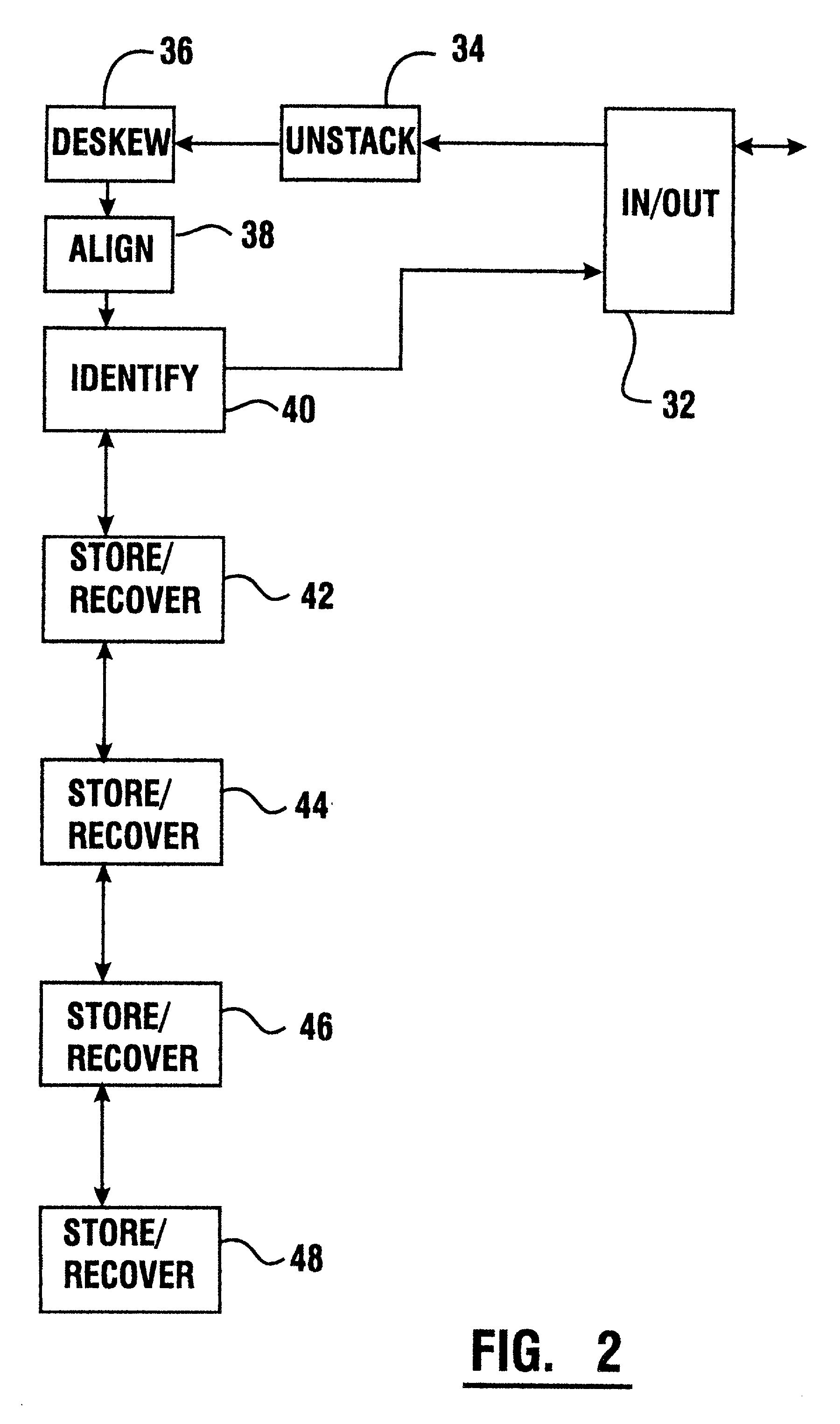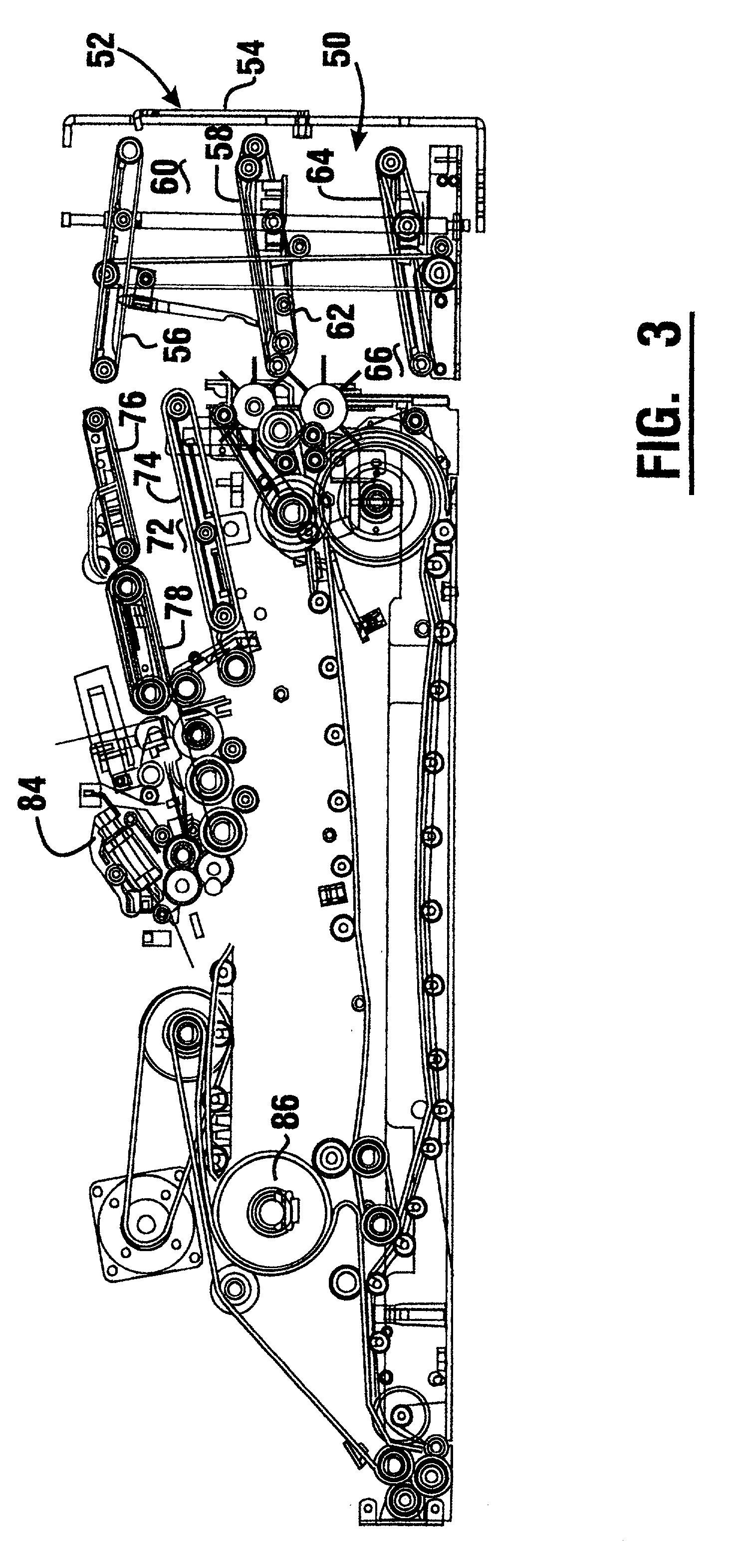Document sensor for currency recycling automated banking machine
a currency recycling and document sensor technology, applied in pile separation, instruments, transportation and packaging, etc., can solve the problems of inconvenience in periodic replacement of currency canisters, labor-intensive activity, and difficulty in identifying the cause of any losses
- Summary
- Abstract
- Description
- Claims
- Application Information
AI Technical Summary
Benefits of technology
Problems solved by technology
Method used
Image
Examples
Embodiment Construction
[0118] Referring now to the drawings and particularly to FIG. 1 there is shown therein a currency recycling automated banking machine of the present invention generally indicated 10. The machine includes a housing 12. Housing 12 includes a customer interface area generally indicated 14. Interface area 14 includes components used for communicating with a user of the machine. These components may include a display 16 which serves as an output device. The interface area may also include a keypad 18 and / or a card reader 20 which serve as manually actuatable input devices through which a user may input information or instructions into the machine. It should be understood that these devices are exemplary and other input and output devices such as a touch screen, display, audio speakers, iris scan devices, fingerprint reading devices, infrared transmitters and receivers and other devices which are capable of receiving or providing information may be used.
[0119] The machine also includes ot...
PUM
 Login to View More
Login to View More Abstract
Description
Claims
Application Information
 Login to View More
Login to View More - R&D
- Intellectual Property
- Life Sciences
- Materials
- Tech Scout
- Unparalleled Data Quality
- Higher Quality Content
- 60% Fewer Hallucinations
Browse by: Latest US Patents, China's latest patents, Technical Efficacy Thesaurus, Application Domain, Technology Topic, Popular Technical Reports.
© 2025 PatSnap. All rights reserved.Legal|Privacy policy|Modern Slavery Act Transparency Statement|Sitemap|About US| Contact US: help@patsnap.com



